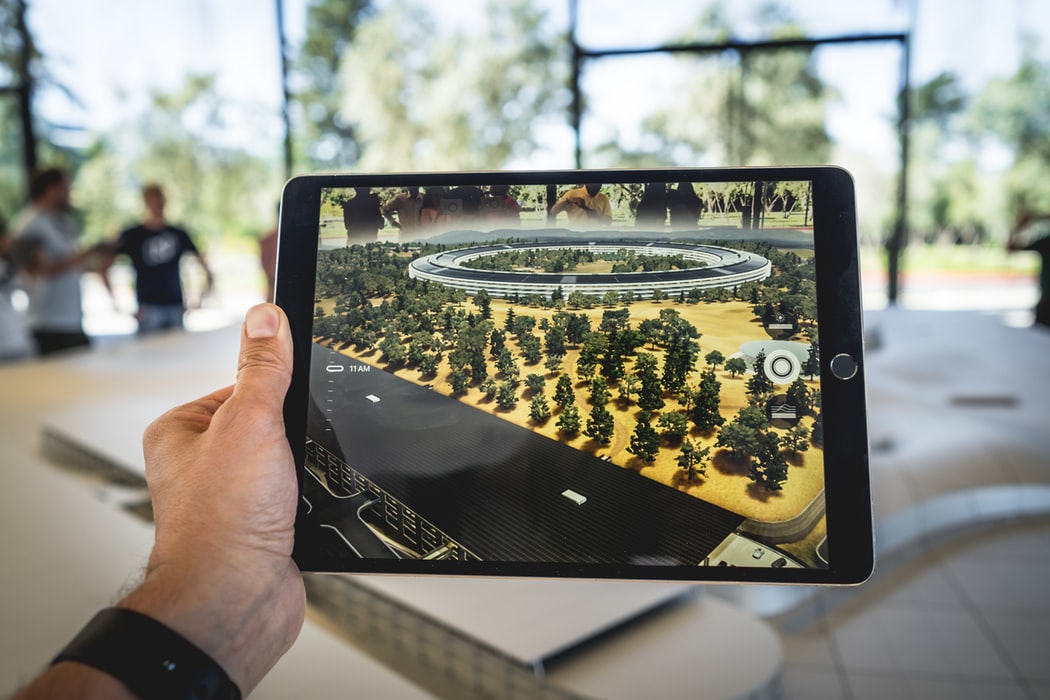
AR may sometimes seem like a long way from being widely deployed by the enterprise, but look closer and augmented reality examples increasingly abound.
They’ve certainly come a long way from 1968, when American computer scientist Ivan Sutherland created the world’s first AR headset, a bulky head-mounted display.
The augmented reality displayed to the user though “The Sword of Damocles” headset, named thus because the user stood into a ceiling mounted headset, was a primitive wireframe square overlaid onto the room or surrounding environment.
This system was not just limited by its size and mobility restrictions, but the pure computational power to map an image or reality over the one we perceive was limited at best; how that has changed. (Most people now carry a device in their pocket that holds computational power Sutherland could have only dreamed about in 1968.)
Now augmented reality headsets are on sale for myriad purposes ranging from videogames, movies and use in retail settings. More robust systems are used in heavy industrial environments such as on oil and gas rigs surrounded by high oceans.
And retail is increasingly deploying AR, for example to test how clothes look on you before buying them (by 2020, 100 million consumers will shop in AR online and in-store, according to Gartner, as retailers increasingly look to use it as an “extension of the brand experience to engage customers in immersive environments“.
Read this: Lenovo Takes on HoloLens with New AR Headset, Platform
Mobile devices have opened up new platforms for augmented reality, Henri Tirri, CTO at InterDigital told Computer Business Review: “The most well-known AR use cases thus far have been games like Pokémon Go and Harry Potter: Wizards Unite.”
This early gamification of the technology is just the start, he suggests other examples, saying: “AR technology can benefit the automotive and transportation industry through the support of network-supported advanced driver assistance systems (ADAS), in which relevant travel information like street signs, building numbers, or traffic and weather conditions are superimposed onto a driver’s visual field.
“AR will become a much more pervasive technology, in the way mobile phones and text messages have become a facet of everyday life for so many of us,” Tirri states.
Augmented Reality Examples in Worker Training
Augmented reality examples also increasingly abound in potentially dangerous sectors, where the cost of training engineers can hit overheads hard and regular deployment on site can highly skilled staff at risk.
Jonathan Bridges, chief innovation officer at networking service Exponential-e notes firms utilising AR can give their employees “a full immersive experience that can be used to represent a deep sea dive or a runway, for example. Enabling pilots, engineers, soldiers, and surgeons to get to grips with the key parts of their job in a safe and controlled environment saves companies money, improves skills and reduces the risks associated with training for these dangerous jobs.”
See also: Startup RealWear Wins Major Digital Headset Deal with Shell
For example; Lockheed Martin uses AR software in conjunction with the Microsoft HoloLens’s to accelerate workflows and the manufacturing of NASA’s Orion spacecraft.
San Francisco-based software firm Scope AR develops a host of enterprise augmented reality examples from engine tuning to visualised heads-up displays of workflow charts.
AR in Video Communications
Hardware and graphics specialists Nvidia have released a software solution for messy video streaming backgrounds. The RTX Greenscreen loads a virtualised image or environment into the background of video stream. It uses AI to track and demarcate the outline of the user’s body so they are placed in front of the virtualised background.
Dmitry Ogievich, CEO of computer vision and augmented reality firm Banuba told us that: “Sometimes the perception of AR in video communications is one that is limited to fun self expression – of which face filters and 3D avatars are second to none – but the truth is how AR solutions are being utilised varies significantly based on the target audience and use case.”
“In enterprise, people tend to seek two main things; comfort and privacy. With an increasingly mobile workforce, it is often desirable to be able to remove any background video and exclusively show the people in focus, eliminating any privacy fears. AR makes this possible no matter your surroundings.”
With the coming onslaught of 5G enabled applications expect to see a host of augmented reality examples come out of the woodwork as both the commercial and industrial sectors find innovative uses.






